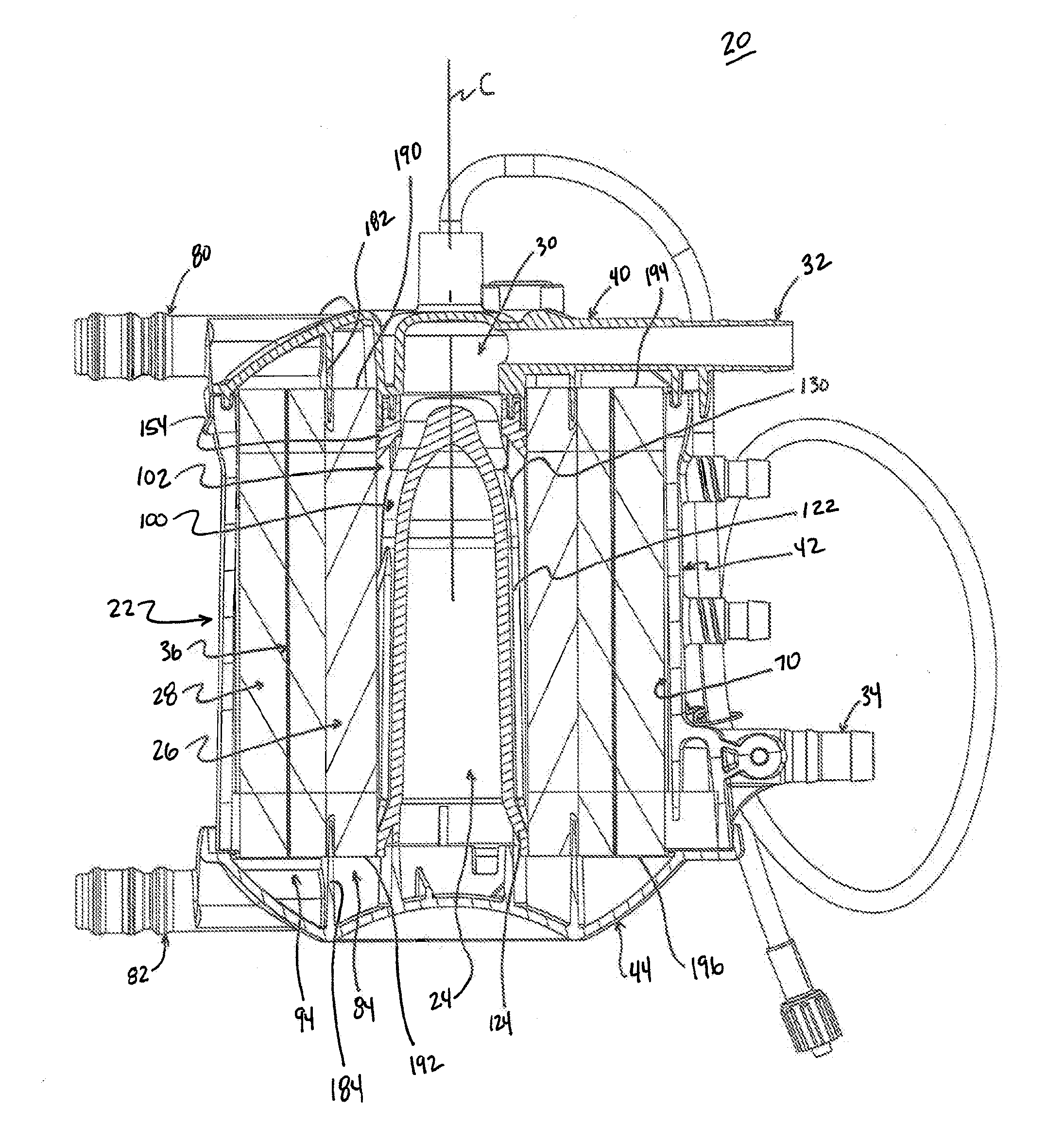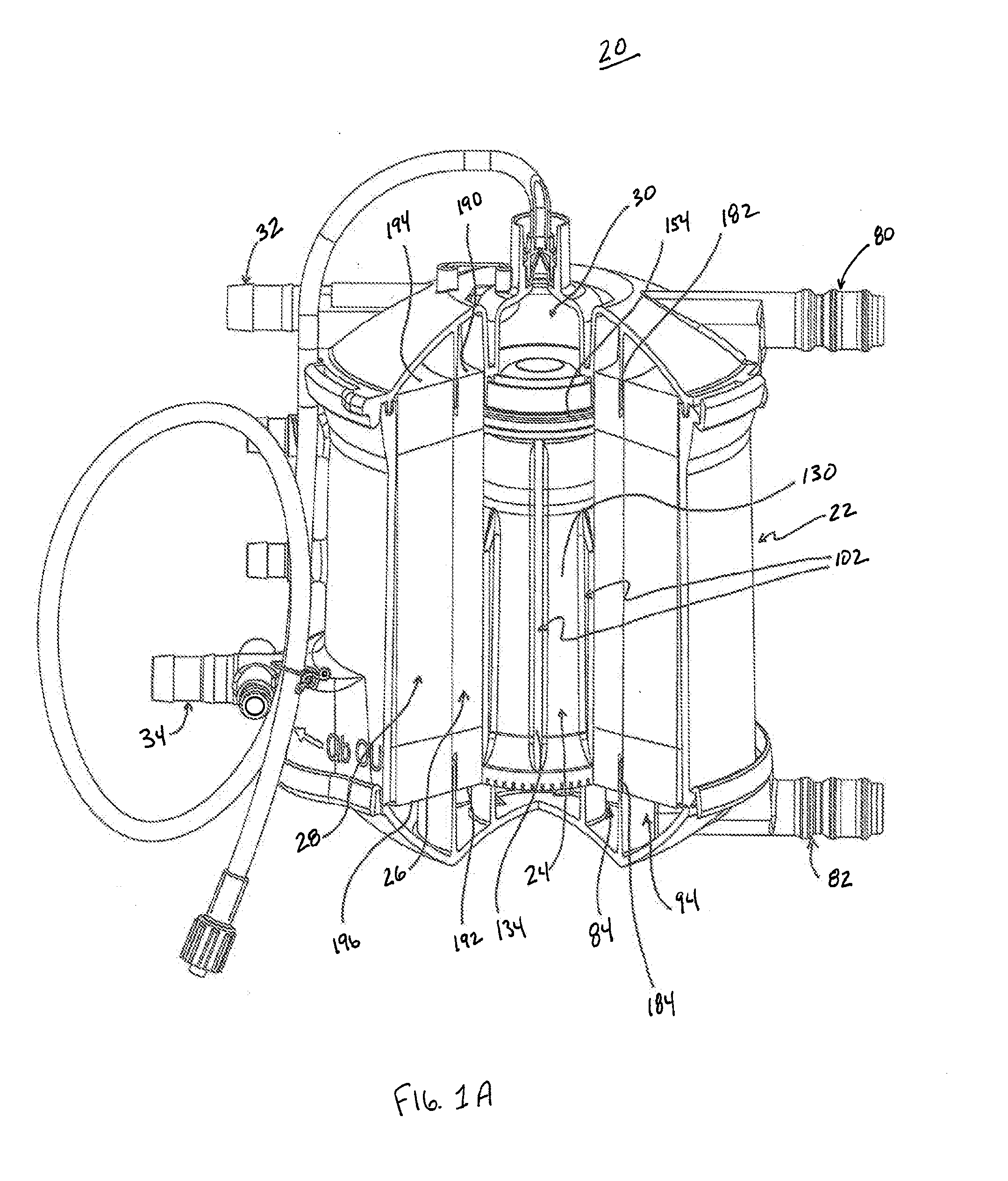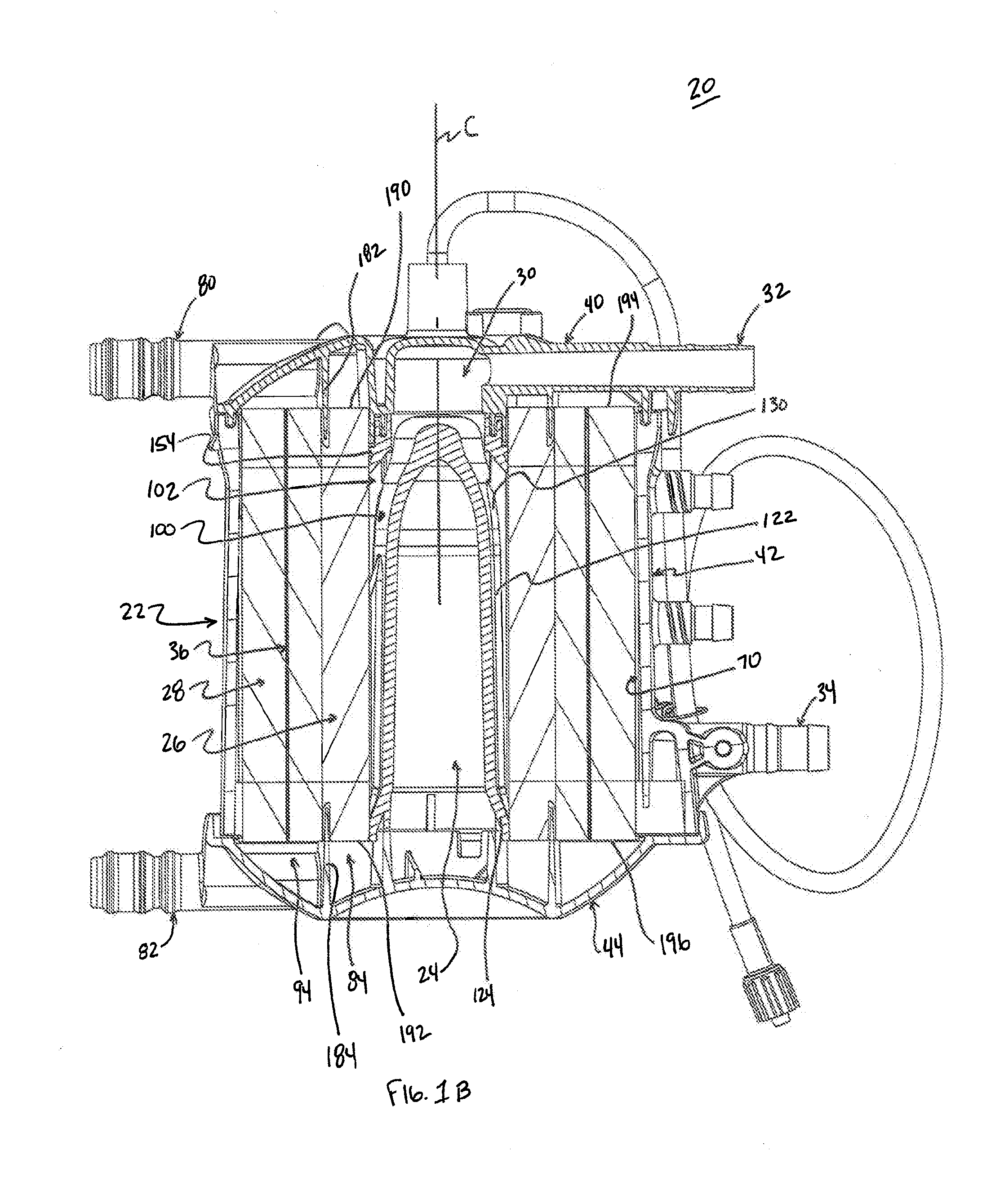De-Airing Oxygenator for Treating Blood in an Extracorporeal Blood Circuit
- Summary
- Abstract
- Description
- Claims
- Application Information
AI Technical Summary
Benefits of technology
Problems solved by technology
Method used
Image
Examples
Embodiment Construction
[0022]One embodiment of an apparatus 20 in accordance with principles of the present disclosure and useful for treating blood in an extracorporeal blood circuit is shown in FIGS. 1A and 1B. The apparatus includes a housing 22, a manifold body 24, a heat exchanger 26, and an oxygenator 28. Details on the various components are provided below. In general terms, however, a portion of the housing 22 (e.g., an upper end cap 40 shown in FIG. 2A and described below) and the manifold body 24 combine to form a de-aering region or bubble trap 30. A blood inlet 32 is arranged relative to the de-aering region 30 so as to direct incoming blood tangentially into the de-aering region 30. A blood outlet 34 is connected to the housing 22, downstream of the heat exchanger 26 and the oxygenator 28. A blood flow path is defined from the blood inlet 32 to the blood outlet 34, with gross air removal occurring within the de-aering region 30, and prior to interaction of the blood with the heat exchanger 26...
PUM
 Login to View More
Login to View More Abstract
Description
Claims
Application Information
 Login to View More
Login to View More - R&D
- Intellectual Property
- Life Sciences
- Materials
- Tech Scout
- Unparalleled Data Quality
- Higher Quality Content
- 60% Fewer Hallucinations
Browse by: Latest US Patents, China's latest patents, Technical Efficacy Thesaurus, Application Domain, Technology Topic, Popular Technical Reports.
© 2025 PatSnap. All rights reserved.Legal|Privacy policy|Modern Slavery Act Transparency Statement|Sitemap|About US| Contact US: help@patsnap.com



